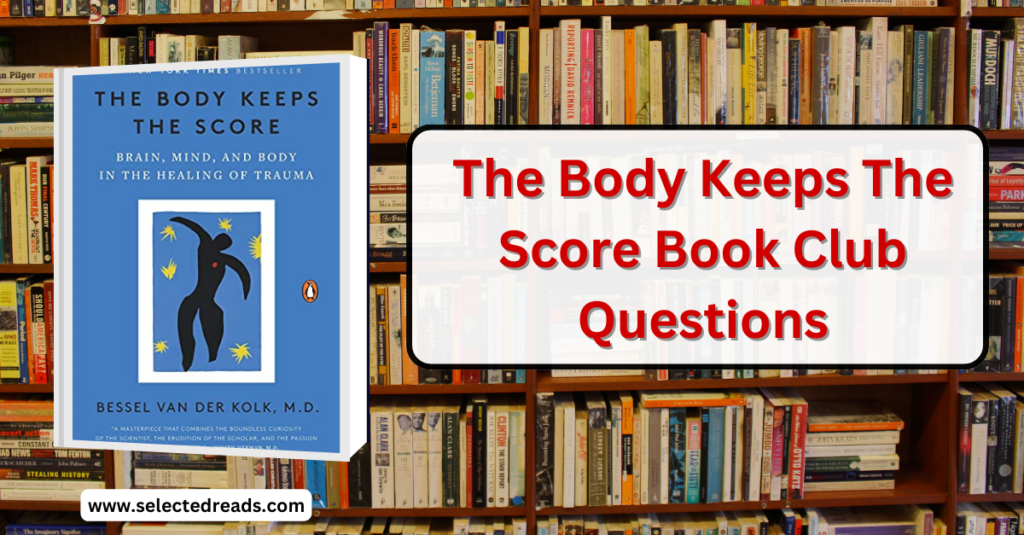“The Body Keeps the Score” is a great book that explores the intricate relationship between trauma, the brain, and the body. Written by Bessel van der Kolk, a renowned psychiatrist and expert in trauma treatment, the book delves into the long-lasting impacts of trauma on an individual’s mental and physical well-being. Drawing on decades of clinical experience and cutting-edge research, van der Kolk illuminates the transformative power of understanding and healing trauma.
The book is divided into five parts, each addressing different aspects of trauma and its treatment.
Part One: The Rediscovery of Trauma
Van der Kolk begins by examining the historical context of trauma, discussing how society’s understanding of traumatic experiences has evolved over time. He emphasizes the importance of recognizing trauma as a significant public health issue, affecting millions of people worldwide. This section also introduces the concept of Post-Traumatic Stress Disorder (PTSD) and how it has become more widely recognized as a legitimate psychological condition.
Part Two: This Is Your Brain on Trauma
In this section, van der Kolk delves into the neurobiology of trauma, explaining how traumatic events can alter brain function and impact an individual’s ability to regulate emotions, form memories, and maintain healthy relationships. He highlights the role of the amygdala, hippocampus, and prefrontal cortex in processing trauma, and discusses how trauma can cause lasting changes in these brain regions.
Part Three: The Minds of Children
Here, van der Kolk focuses on the vulnerability of children to trauma and the long-term consequences of childhood trauma on mental health and development. He discusses the effects of abuse, neglect, and attachment disruptions on the developing brain and the ways in which early trauma can lead to a host of emotional, cognitive, and behavioral problems in adulthood.
Part Four: The Imprint of Trauma
In this section, van der Kolk explores the ways in which the body holds onto traumatic memories, sometimes long after the conscious mind has forgotten them. He discusses how trauma can manifest as physical symptoms, chronic pain, and illness, and emphasizes the importance of addressing the physiological aspects of trauma during treatment.
Part Five: Paths to Recovery
In the final section, van der Kolk discusses various approaches to trauma treatment, ranging from traditional talk therapy to innovative body-based therapies. He advocates for a holistic approach to healing, emphasizing the need to integrate both mind and body in the therapeutic process. The book showcases several evidence-based treatment methods, including Eye Movement Desensitization and Reprocessing (EMDR), trauma-informed yoga, and neurofeedback, as well as the importance of social support and community in fostering resilience and recovery.
“The Body Keeps the Score” is a comprehensive, accessible, and informative resource for individuals seeking to understand the complexities of trauma and its impact on the mind, brain, and body. By shedding light on the ways in which trauma can fundamentally alter a person’s life, van der Kolk offers hope and guidance for those on the journey to healing and recovery.
The Body Keeps the Score Book Club Questions
In this section, we will explore thought-provoking book club questions for “The Body Keeps the Score” . These questions are designed to encourage a deeper understanding of the book’s themes, perspectives, and insights, while also sparking engaging discussions about trauma, healing, and the impact of traumatic experiences on the mind, brain, and body. Whether you’re reading this book individually or as part of a group, these questions will inspire reflection and conversation about the importance of addressing trauma and fostering resilience and recovery.
- How has reading “The Body Keeps the Score” changed your understanding of trauma and its effects on the mind, brain, and body? Were there any particular sections or concepts that resonated with you the most?
- The author discusses how society’s perception of trauma has evolved over time. What do you think has contributed to this shift in understanding, and why is it important for society to continue recognizing the significance of trauma?
- In the book, van der Kolk explores the neurobiology of trauma, emphasizing how traumatic events can alter brain function. How does this scientific perspective inform your understanding of the challenges faced by trauma survivors?
- Childhood trauma is a major focus in “The Body Keeps the Score.” How does the discussion of trauma’s impact on children’s development highlight the importance of early intervention and support for those affected by trauma?
- Van der Kolk emphasizes the importance of addressing the physiological aspects of trauma during treatment. How does this holistic approach differ from more traditional forms of therapy, and why might it be more effective for some individuals?
- The book presents various evidence-based treatment methods for trauma, such as EMDR, trauma-informed yoga, and neurofeedback. Which of these methods do you find the most intriguing, and why? Are there any you would be interested in exploring further?
- The role of social support and community in fostering resilience and recovery is emphasized throughout the book. Can you think of examples in your own life where social connections have helped you or someone you know to overcome adversity?
- After reading “The Body Keeps the Score,” do you believe that greater public awareness and education about trauma and its effects are necessary? How can society better support trauma survivors and promote healing?
- Which personal stories or case studies shared by van der Kolk in the book were the most impactful for you, and why?
- How has reading “The Body Keeps the Score” influenced your perspective on mental health, healing, and the importance of addressing both mind and body in the therapeutic process?
I hope you find the Body Keeps the Score summary helpful!





